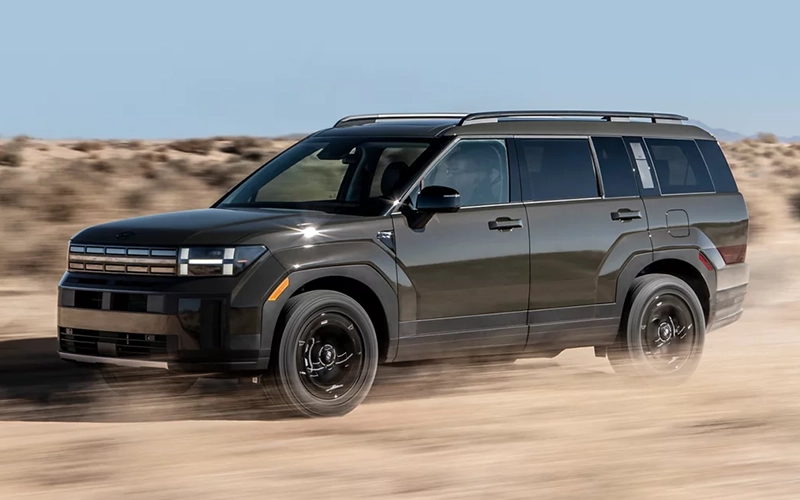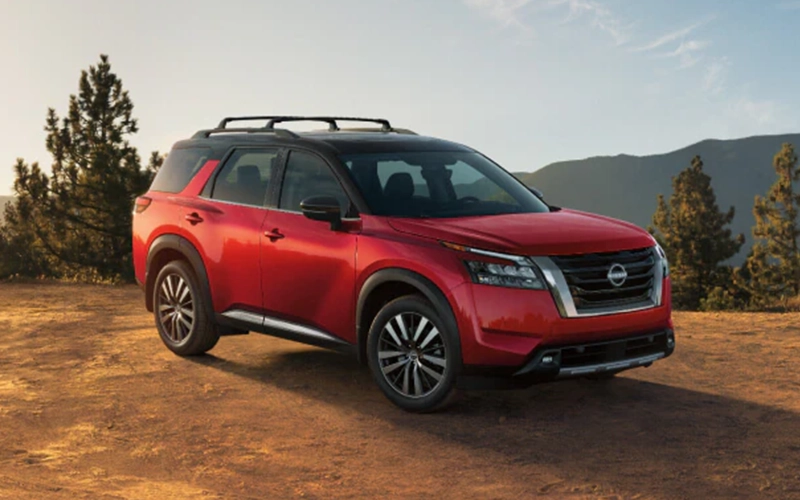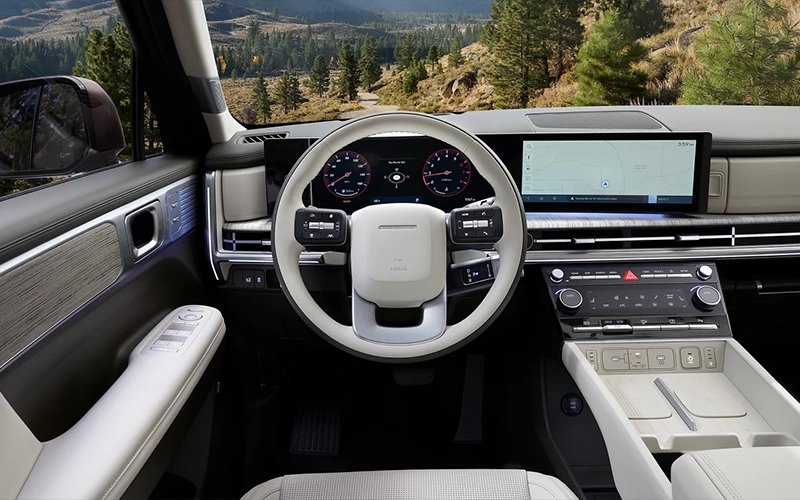
The Santa Fe is an understandably popular model, with its distinctive style, clever design that maximizes interior space, and incredible versatility, it stands out from the crowd. In fact, to fully appreciate what a marvel the Santa Fe really is, we have to take a closer look at how the competition compares to it. So we put together this helpful guide to illustrate just what an amazing value the Santa Fe is.
Hyundai Santa Fe VS Volkswagen Tiguan


| 2025 Hyundai Santa Fe SE | VS | 2025 Volkswagen Tiguan S |
| $34,300 ✓ | MSRP* | $29,495 |
| 277 HP / 311 LB-FT TQ ✓ | Horsepower / Torque | 201 HP / 206 LB-FT TQ |
| 3,500 pounds ✓ | Towing Capacity | 1,500 pounds |
| 79.6 cubic feet ✓ | Max Cargo Capacity | 58.9 cubic feet |
| 44.4 inches / 42.3 inches / 30 inches ✓ | Legroom (1st row / 2nd row / 3rd row) | 40.4 inches / 40.4 inches / 27.9 inches |
| 18 inches ✓ | Wheels | 17 inches |
| Standard ✓ | Remote Start | Optional |
| Power, hands-free ✓ | Liftgate | Power |
| Standard ✓ | Selectable Drive Modes | Not available |
| 60 months / unlimited miles ✓ | Roadside Assistance | 36 months / 36,000 miles |
For our first comparison, we’re looking at the Volkswagen Tiguan. As a three-row compact SUV, the Tiguan is the closest to the Santa Fe in size, and both share an identical 19-foot turning radius. The Tiguan has a bit of a price advantage, but it becomes pretty clear why almost immediately. The Tiguan comes up short on power, and by quite a large margin. Unsurprisingly, this translates into a lower towing capacity for the Tiguan, and a massively lower capacity at that. That’s compounded by the fact that the cargo capacity of the Santa Fe is so much bigger as well. The larger interior space of the Santa Fe means more legroom in every row, and by enough that you’ll certainly notice.
The Santa Fe comes better equipped than the Tiguan, and just at a glance, you can see that this starts with the bigger wheels. The Santa Fe comes with a remote start, controllable either through an app or a button on your keyfob, but neither version is standard on the Tiguan. Volkswagen does give you a power rear liftgate as standard, but it doesn’t have a hands-free function, the way the one on the Santa Fe does. The Tiguan doesn’t offer selectable driving modes, something that many drivers find quite useful. And lastly, while the Tiguan does come with some roadside assistance coverage, the period of that coverage is at least a couple of years short of what you get with the Santa Fe
Hyundai Santa Fe VS Nissan Pathfinder


| 2025 Hyundai Santa Fe SE | VS | 2025 Nissan Pathfinder S |
| $34,300 ✓ | MSRP* | $36,400 |
| 277 HP / 311 LB-FT TQ ✓ | Horsepower / Torque | 284 HP / 259 LB-FT TQ |
| 24 mpg ✓ | Combined Fuel Economy | 23 mpg |
| 12.3 inches ✓ | Infotainment Touchscreen | 8 inches |
| Wireless ✓ | Android Auto / Apple CarPlay | Wired |
| Standard ✓ | Rear Cross Traffic Alert | Not available |
| Standard ✓ | Remote Start | Requires higher trim |
| Standard ✓ | Lane Keep Assist | Requires Higher Trim |
| Standard ✓ | Adaptive Cruise Control | Requires Higher Trim |
| 36 months / 36,000 miles ✓ | Included Routine Maintenance | 24 months / 24,000 miles |
Next up we have the Nissan Pathfinder. Technically speaking, the Pathfinder is a midsize SUV, measuring 7.5 inches longer than the Santa Fe. But this actually illustrates just how well the Santa Fe is designed, as it still offers more passenger space, by 3.5 cubic feet. Because of this, and the similar price, we’re going to count it as a competitor. The Pathfinder does come with a bit more horsepower, although the Santa Fe has so much more torque that it’s going to feel much more capable, especially with a full load of passengers or while towing. But despite this, the Santa Fe also manages to get better fuel economy. The difference obviously isn’t huge, but having both more power and better fuel economy at the same time is a sure sign of a more advanced engine.
The current generation of the Pathfinder isn’t all that old yet, but somehow the tech is already noticeably outdated. A good example of this is the infotainment touchscreen, which is 8 inches in the Pathfinder, with an available upgrade to 9 inches. The standard 12.3-inch screen in the Santa Fe is much easier to see and operate. Not only that, but the system itself is more advanced, including wireless connectivity for Android Auto and Apple CarPlay, while the system in the Pathfinder still requires a wired connection. The standard tech in the Santa Fe is impressive, but the Pathfinder isn’t difficult to beat in this area, even with its higher starting price. Standard features on the Santa Fe like a remote start, Lane Keep Assist, and adaptive cruise control, all require an upgrade to a higher trim for the Pathfinder. And even though the Pathfinder does have automatic reverse braking as standard, it doesn’t include rear cross-traffic monitoring the way it does in the Santa Fe. Lastly, Nissan does better than some competitors when it comes to the included routine maintenance, but not by enough to compare to the Santa Fe.

Winner - Hyundai Santa Fe
The Hyundai Santa Fe is a unique vehicle. Other compact SUVs can’t compete with its interior space or highly capable drivetrain, and midsize models can’t compete with its price, maneuverability, or standard equipment. The Santa Fe is the three-row SUV sweet spot, and that explains just why it’s so popular. Come see for yourself at Crestmont Hyundai.
*MSRP excludes freight charges, tax, title, and license fees. Freight charges and actual dealer prices may vary. Vehicles displayed may contain optional equipment at additional cost. Accessory items shown may vary according to model and illustration.

